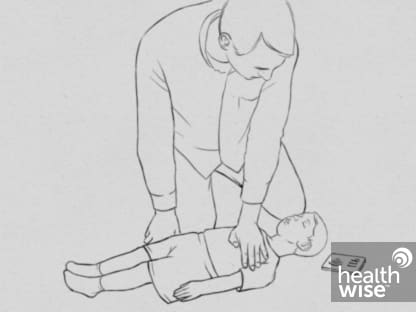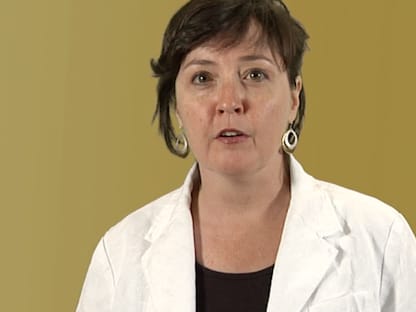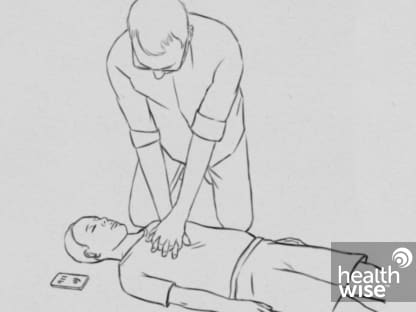Overview
What are public health threats?
Public health threats are events or disasters that can affect you and your community. Some examples of public health threats are:
- Natural disasters.
- Disease outbreaks, Opens dialog.
- Accidents involving hazardous substances.
- Terrorist attacks.
- Racial attacks.
- Active shooters or other violence in public areas.
Public health threats can affect air quality, cause shortages of safe water and food, and cut off electricity, gas, telephone, and other services. You and your family members may be separated.
Disasters and public health threats are hard to predict and usually are out of your control. But you can take steps to help keep yourself and your family safe.
How can you prepare for a disaster?
Here are some things you can do to help prepare for a disaster.
- Learn about specific health threats and what you can do to reduce the risk to your health and safety.
- Make an emergency plan and gather the supplies you may need during an emergency.
- Learn basic first aid skills such as CPR.
And know where to find first aid information in case of injuries. For example, you can keep a first aid book in your emergency supplies kit.
- Always look to local authorities and health experts for specific, up-to-date information for your area.
Following these steps can help you be better prepared for any type of public health threat.
What health threats can happen in your community?
There are many things in our environment that can be harmful. Chemicals, fumes, viruses, bacteria, and low-level radiation are just a few of them. When these substances are released in large quantities or get out of control, they can become urgent public health threats. Guidelines for how to prepare for and avoid a problem often depend on how the substance is spread.
In general, a health threat may spread through a community:
- In the air.
- In the water supply or food.
- From human to human.
- From animal or insect to human.
Call your local health department for information about health threats in your area.
Air Contamination
Chemicals are the most likely source of air contamination. An accident at a plant or factory or a train wreck might release large amounts of a hazardous chemical into the air, for instance. A terrorist attack could involve the deliberate release of a toxic chemical or gas.
In a bioterror attack, bacteria or viruses causing diseases such as anthrax, Opens dialog, pneumonic plague, Opens dialog, smallpox, Opens dialog, or tularemia, Opens dialog could be released in an aerosol form. Anyone who inhaled the substance could be affected.
Although air itself does not become radioactive, the release of radiation into the environment can create radioactive dust and dirt (fallout) that can make the air unsafe. A "dirty bomb" could work in this manner, causing a relatively minor explosion but doing its real damage by releasing radioactive materials into the environment.
What you can do
You cannot do much in advance to protect yourself from a hazardous substance released into the air. If there hasn't been an obvious explosion or a known terrorist attack, the air could become contaminated without anyone knowing it until people or animals start to have symptoms.
As with other potential emergencies, it makes sense to have a disaster kit with water, food, first aid items, tools, and other essentials. Concern over terrorist threats has prompted some people to consider adding the following items to their supplies:
- Masks. A mask can help protect against some infections (such as COVID-19). But it will not protect against many other substances. A gas mask can protect against many toxic gases and other harmful substances in the air. But gas masks are expensive and hard to use. They are helpful only if you know how and when to use them and if they are properly fitted. They are not recommended for the general public. You do not need to purchase or wear any kind of protective mask unless civil or health authorities in your area tell you to do so.
- Potassium iodide tablets. Potassium iodide, also known as KI, should only be used if public health officials recommend them. KI helps protect your thyroid gland from the harmful effects of radioactive iodine, which could be released as a result of a dirty bomb, an explosion at a nuclear power plant, or any other nuclear incident.
If a hazardous substance is released into the environment:
- Get out of the immediate area if possible.
If the release has occurred outdoors, go inside. If it has occurred indoors, go outside. Move out of low-lying spots to higher ground, because most chemicals released into the environment are heavier than air and will sink.
- Follow instructions from public health and emergency officials.
Phones of government agencies are likely to be overwhelmed with calls during a public health emergency. So do not try to call for instructions. Depending on the kind of release, authorities may advise you to shelter in place or simply to stay indoors. You do not need to leave your community unless local authorities tell you to.
- If you are directly exposed to radioactive dust, dirt, or other fallout, follow the steps for personal decontamination to get the substance off your skin as quickly and completely as possible.
Food and Water Contamination
Chemicals, heavy metals like lead and mercury, and living organisms such as bacteria and viruses can all be threats to a safe water supply. These substances can also contaminate food.
Unintentional contamination of water as a result of chemical leaks or spills, natural disasters, and other causes has been a much bigger problem than deliberate contamination. Likewise, accidental food contamination by botulinum toxin (the agent that causes botulism, Opens dialog), E. coli, Opens dialog, and other harmful organisms during the storage or preparation of food is much more likely than intentional food poisoning.
Intentional poisoning of food and water has occurred. The use of food and water to expose people to biological or chemical weapons is also possible. Hazardous chemicals could be deliberately released in liquid or solid form. Radioactive materials could be released into the water.
What you can do
With the exception of a known accident (such as a chemical spill into the water supply) or an announced terrorist or criminal incident, you probably would not know that you had consumed contaminated water or food unless you developed symptoms. Here are some ways to reduce your risk of consuming contaminated food or water and to be better prepared for public health emergencies affecting the water supply.
- Don't eat food or drink water or any other beverage that looks or smells suspicious.
In general, it is not a good idea to eat or drink something when you don't know who has prepared or provided it or where it has come from.
- When shopping, avoid food or beverage items that look like they may have been tampered with.
Check to see if the seal is broken or if there is another sign that the container or packaging has been opened.
- Take steps to prevent food poisoning at home.
- Follow guidelines for preparing and cooking food safely, keeping your kitchen clean, and washing your hands and utensils.
- If you preserve and can foods at home, learn and follow proper canning and freezing techniques to ensure safety.
- Discard cans or jars with bulging lids or leaks.
- Know where your household's water comes from.
- Is it from the city water supply? Most public water supplies are carefully monitored and treated to guard against contamination.
- Does a private well supply your water? Private water supplies are unlikely to be targets of intentional contamination. But they can become contaminated by accident and may not be as closely monitored as city water supplies.
- Consider storing emergency water and food supplies.
- Learn how to purify water.
And make sure that you include the supplies for this in your emergency kit. Knowing how to purify water is useful in any situation where you have to rely on untreated water.
Here are some things you can do if there is an emergency that affects the water supply.
- Follow all instructions from local authorities.
These may include instructions on purifying your water (commonly called "boil orders") or using other water sources until authorities notify your community that it is safe to drink from the regular water supply again.
- Try not to waste any water, but drink what you need.
How much water you need can vary based on your age, health, diet, and climate. Learn the signs of dehydration in children, Opens dialog and adults, Opens dialog so that you know what to watch for.
- Use the safest water you have first before turning to other water sources.
- If you know or suspect that your skin has come in direct contact with water that has been contaminated by a hazardous chemical or radiation fallout, follow the steps for personal decontamination to get the substance off your body as completely and quickly as possible.
Learn more
Disease Transmission From Humans, Animals, and Insects
Some bacteria, viruses, and other biological agents can be spread from person to person or from animals or insects to people. The ease of international travel has made many of these health threats more difficult to contain. Health threats like COVID-19 have made people more aware of how easily disease can spread not only within a community but from one community to the next.
With some exceptions such as smallpox, Opens dialog and pneumonic plague, Opens dialog, which are contagious diseases, most biological agents that could be used as bioterror weapons are not spread from person to person.
The U.S. Centers for Disease Control and Prevention (CDC) and the World Health Organization (WHO) have current, reliable information on communicable diseases and health concerns throughout the world. For updates on specific health emergencies, visit their websites:
- www.cdc.gov
- www.who.int/en
- www.pandemicflu.gov
What you can do
Here are some tips for reducing your chances of being infected with or spreading a contagious disease.
- Wash your hands often. Scrub with soap and water for at least 20 seconds.
This is especially important if you live with or come into contact with someone who is sick.
- Do not share bedding, towels, utensils, or other items with someone who is sick or, if you are sick, with anyone else.
- Avoid exposure to disease-carrying animals and insects if you are in an area where these are a problem.
- Follow the advice of local health authorities if there has been a disease outbreak in your community or in an area where you are traveling.
It is especially important to follow health experts' instructions if you live or work with someone who becomes sick. For instance, you may be advised to wear a mask if you are in close contact with someone who has a serious contagious illness, such as COVID-19. Make sure you know how to properly fit and wear the mask.
- If there is an outbreak of a contagious disease in your area, do not leave the area unless authorities tell you to.
If you have already been infected, you may spread the disease. Leaving the area may also cause a delay in your diagnosis or treatment.
Learn more
Bioterrorism and Vaccinations
Anthrax, smallpox, botulism, plague, tularemia, and viral hemorrhagic fevers, Opens dialog are the diseases that pose the greatest threat to the U.S. public. But at this time, there is a supply of anthrax and smallpox vaccines only. These vaccines are not now available to or recommended for the general public. But the government has advised vaccination for people at high risk of exposure to anthrax or smallpox. These people include people who will respond to a bioterrorism emergency.
Go to the Centers for Disease Control and Prevention (CDC) website at www.bt.cdc.gov/bioterrorism for more information about vaccine recommendations.
Learn more
Getting Organized
Making an emergency plan
A little organization can go a long way toward helping you feel ready to handle the unexpected. Having an emergency plan for your household can help you and your family be better prepared for any kind of disaster or emergency. Putting together an emergency plan is easy. Here are some tips.
- Choose a friend or relative as a contact person for family members to call if they are separated during a disaster or emergency.
It's best to choose an out-of-state contact. Make sure every member of your household has the contact's phone number. Email may also be a good way to get in touch.
- Pick a place to meet outside your neighborhood in case you can't return home.
Make sure every member of your household has the address and phone number. Also choose a few places to meet just outside your home, such as neighbor's front yard or on a corner, in case there is a fire in your home.
- Write down where and how to turn off the water, gas, and electricity to the house.
Make sure you have any special tools this requires, such as a T-wrench for the water line.
- Discuss what you would do if you had to leave your home and the area.
Include your pets in your plans. Most emergency shelters and health facilities will not accept animals.
- Keep important documents together and readily available in case you need to quickly evacuate your home.
This includes health information, like lists of medications, plus birth certificates, marriage licenses, wills, insurance forms, phone numbers you might need, and credit card information.
You may have other things that you want to include, especially if you have children in school or if anyone in your household has special needs. Review your plan often, and make sure that phone numbers, email addresses, and other items are still current.
Assembling an emergency supplies kit
Having an emergency supplies kit for your household can help you and your family be better prepared for any kind of disaster or emergency. Here are some tips for assembling one.
- Include the essentials.
They are the same no matter what the situation:
- Food and water
- First aid supplies and medicines
- Blankets and clothing
- Special-needs items (such as baby formula)
- Certain tools and household items, including cell phone chargers, a battery-powered radio, a flashlight, and extra batteries
You can also use a radio or flashlight that is powered by a hand crank and doesn't need batteries.
- Use a checklist to gather supplies.
Visit the American Red Cross's website at www.redcross.org for a checklist to use as you gather supplies.
- Store everything in one place, preferably a cool, dark location.
- Put together a smaller version of your emergency kit that you could take if you had to leave home or shelter in place.
- Keep supplies fresh.
After you've assembled your emergency supplies, remember to check and replace them now and then.
- Follow the Red Cross's guidelines (www.redcross.org) on how often to replace food and water supplies. Even "nonperishable" items may need to be replaced.
- Remember that both nonprescription and prescription medicines have expiration dates.
Finding information on disaster readiness
It is hard to prepare for a terrorist attack because no one knows what form it might take or when or where it may occur. But being prepared for general emergencies—including fires, natural disasters, power failures, fresh-water shortages, and similar events—makes sense and will help to reassure you and your family.
The following agencies provide extensive information about disaster planning and terrorism:
- The American Red Cross has specific disaster-readiness guidelines, including instructions on how to build a disaster supplies kit and how to make a disaster plan. Go to www.redcross.org for more information.
- The U.S. Federal Emergency Management Agency (FEMA) provides extensive information about national security emergencies, including chemical, biological, and nuclear attacks. Go to www.fema.gov for more information.
- The U.S. Centers for Disease Control and Prevention (CDC) provides answers to frequently asked questions about chemical and biological agents, such as toxic gases and smallpox, and nuclear attacks as well as advice on how to protect yourself. Go to www.cdc.gov for more information.
- The U.S. Department of Homeland Security urges citizens to be prepared and stay informed. Go to www.ready.gov for more information.
Responding to a Disaster
A natural disaster, industrial accident, or terrorist attack can cause a lot of situations that lead to injury or illness.
In any disaster situation, transportation and communication may be interrupted. Medical services may be overwhelmed.
You may need to evaluate or treat minor or major injuries or provide first aid. That's because medical care may not be available right away.
In some cases, your home may be damaged. Or you may need to be evacuated.
A disaster may interrupt water supplies, food supplies, sewer and trash services, and heat and electricity. You may be exposed to the elements or have less-than-adequate shelter for a period of time.
You may feel more confident when an emergency happens if you know what to do ahead of time and have resources at hand. For example, you may want to learn how to do cardiopulmonary resuscitation (CPR) or how to help someone who is choking. And it's helpful to know how to treat cuts, burns, or head injuries before something happens.
Emotional responses
Everyone responds to traumatic events in different ways. But it's common to have some type of reaction. You may react right away or days, weeks, or months later.
After a traumatic event you may:
- Have changes in your emotions, such as:
- Feeling hopeless or that the world and other people aren't safe.
- Being overwhelmed by certain emotions, such as anxiety, anger, shame, or guilt.
- Feeling too little emotion, or numb.
- Have changes in your behaviors, such as:
- Avoiding people or places that remind you of the event.
- Withdrawing from friends, family, and activities.
- Having disturbing memories or dreams about the event. Certain smells, noises, or other reminders of the event may cause them.
- Having trouble with sexual relationships.
- Have physical changes, such as:
- Having headaches, dizziness, or tiredness that you can't explain.
- Startling easily or feeling like you can't relax.
- Having trouble sleeping.
- Having memory loss or trouble concentrating.
It can take months or years to heal from a traumatic event. But most people get better with time. If you need help to get better, contact your doctor or counselor.
If you are feeling hopeless or like you might harm yourself, get help right away.
Where to get help 24 hours a day, 7 days a week
If you or someone you know talks about suicide, self-harm, a mental health crisis, a substance use crisis, or any other kind of emotional distress, get help right away. You can:
- Call the Suicide and Crisis Lifeline at 988.
- Call 1-800-273-TALK (1-800-273-8255).
- Text HOME to 741741 to access the Crisis Text Line.
Consider saving these numbers in your phone.
Go to 988lifeline.org for more information or to chat online.
Learn more
Emergencies
Injuries
- Back Problems and Injuries
- Burns and Electric Shock
- Chest Problems
- Cuts
- Head Injury, Age 3 and Younger
- Head Injury, Age 4 and Older
- Heart Attack
- Neck Problems and Injuries
- Poisoning
- Stroke
Environmental exposure
- Carbon Monoxide Poisoning
- Environmental Illness
- Hand-Washing
- Heat-Related Illnesses
- Hypothermia and Cold Temperature Exposure
- Insect Bites and Stings and Spider Bites
Emotional issues
Watch
Related Information
Credits
Current as of: October 24, 2024
Author: Ignite Healthwise, LLC Staff
Clinical Review Board
All Ignite Healthwise, LLC education is reviewed by a team that includes physicians, nurses, advanced practitioners, registered dieticians, and other healthcare professionals.
Current as of: October 24, 2024
Author: Ignite Healthwise, LLC Staff
Clinical Review Board
All Ignite Healthwise, LLC education is reviewed by a team that includes physicians, nurses, advanced practitioners, registered dieticians, and other healthcare professionals.








